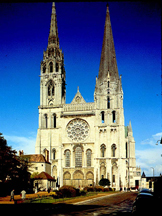
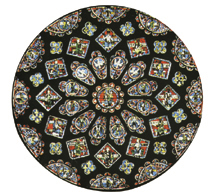
Many people are interested in actually seeing how geometry was applied in the art of sacred traditions worldwide.
One fine example involves the north rose window of Chartres Cathedral. It was a gift of Blanche of Castile, Queen Consort of France, circa 1231.
Clearly, it is geometrically designed. But do you know how?


Here's the flow of the geometric construction, developed from a drawing in The Dimensions Of Paradise, written by my friend John Michell:
First, use one of the various techniques for finding twelve equally-spaced points around a circle.
One simple construction is shown here, which begins by turning a circle and constructing a square around it:

Connect every fifth point as shown to create this dodecagram, or twelve-pointed star.

Twelve small circles nestle within the rays of the star as shown below.

Find the outer point of each of these circles, and connect them to form a smaller dodecagram star, seen here.

While it's not necessary, you may want to erase some of the inner line segments, like this below, within the inner red outline.
Then (below, right) connect points with twelve central lines as shown.


So what size should the circular rose window itself be? Not necessarily the full circle.
Don't try to decide based on human whim but, again, let the geometry itself show you what to do.
Our wise ancestors understood that mathematics was not a human invention (only the ways to symbolize it are) but it is a discovery, and that shapes and numbers are ambassadors from eternity able to teach us a divine language expressing eternal principles.
So, to find the proper size of the circular window itself, connect every fourth point of the large dodecagram star to form an equilateral triangle. The circle constructed within that triangle will show you the window's intended size.

This is enough to reveal the basic scheme of how this rose window was designed.

Of course, the geometry of this window is an integral part of the design of the entire structure, which was composed as an interconnected whole. Using an elevation plan of Chartres, see if you can discover how this construction "extends" to encompass and relate to the building's entire design. I suspect that the whole front is an expanded version of the window.
I've created an animated version of this construction.
Other rose windows were similarly designed using different geometric constructions. The Canticle of the Sun East Rose Window of Grace Cathedral in San Francisco, California, uses this same geometric grid but in a different way. I've created an animated version of its geometric grid (identical, up to a point, with that of Chartres). The Cathedral of St. John The Divine uses a different, but related, grid. I've painted some watercolors using this geometric pattern. This activity may be found in Constructing The Universe Activity Book Volume 2.
This 12-pointed geometric construction is not unique to this rose window but can be found elsewhere as well, in different media. One example is this horoscope made for the Iskandar Sultan of Central Asia in 1411 when he was 27. Because it is an astrological horoscope from that place and time it naturally has a 12-fold structure. It is found in the Wellcome Collection.
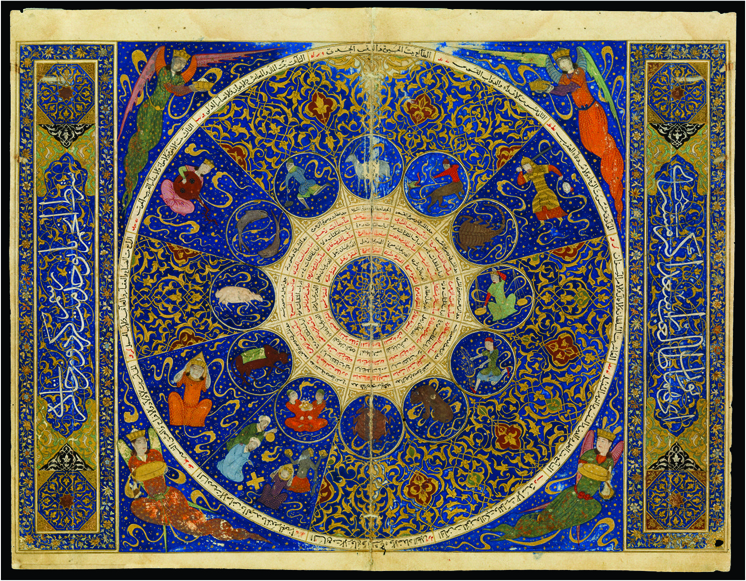
The unseen geometry underlying the horoscope's scheme is similar to that of Chartres Rose Window as described above, but they make use of the geometry in slightly different ways.

More about this Horoscope and it's geometry can be found here.
With these examples, perhaps you'll be able to discover the geometric constructions underlying other great cathedral rose windows and worldwide works of art for yourself. Or design your own objects using this timeless construction. The geometry will show you what to do.
For more about the philosophy of sacred art using twelve-fold design symbolism, click here.
To see any of these geometric analyses, click on its name:
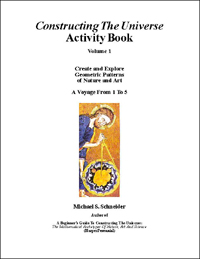
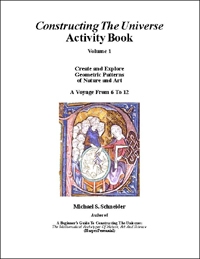
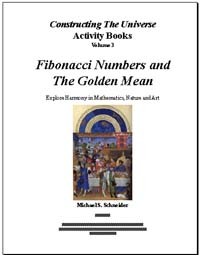



Back to the Constructing The Universe home page.